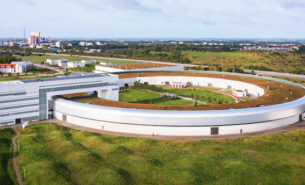An international team of researchers from Hokkaido University, Lund University, MAX IV Laboratory in Sweden, and Diamond Light Source in the UK has made significant progress in synthesising nanostructured two-dimensional gold films. This development could pave the way for advances in catalysis, electronics, and energy conversion.
Read more
Hokkaido University
The research team utilized a bottom-up approach, growing gold monolayers on iridium substrates with boron atoms embedded at the interface. This method produced nearly freestanding gold layers with hexagonal nanoscale patterns, stabilized by boron. The resulting films exhibited notable thermal stability and distinctive electronic properties, addressing the challenges of stabilizing two-dimensional metallic structures.

The facilities at MAX IV Laboratory were central to the research. The MAX IV STM Laboratory facilitated the synthesis of the gold films and their topographic characterization, while the Surface- and Materials Science end station at the FlexPES beamline enabled detailed analysis using techniques such as X-ray Photoelectron Spectroscopy (XPS), X-ray Absorption Spectroscopy (XAS), and Angular Resolved Photoelectron Spectroscopy (ARPES). These complementary approaches provided valuable insights into the structure, bonding, and electronic properties of the films.
“The combination of synthesis and advanced characterization at MAX IV, particularly the ability to study atomic arrangement and surface chemistry in the same sample, was essential to this work,” said Dr. Alexei Preobrajenski of Lund University.
As part of the collaborative effort, as-grown samples were sent to Diamond Light Source in a vacuum suitcase for X-ray Standing Wave studies of the buried boron interlayers. The interfacial phenomena were extensively analysed using computational models developed by the Hokkaido University team, which were instrumental in understanding the underlying mechanisms of boron intercalation and the nanostructuring of the gold films.




